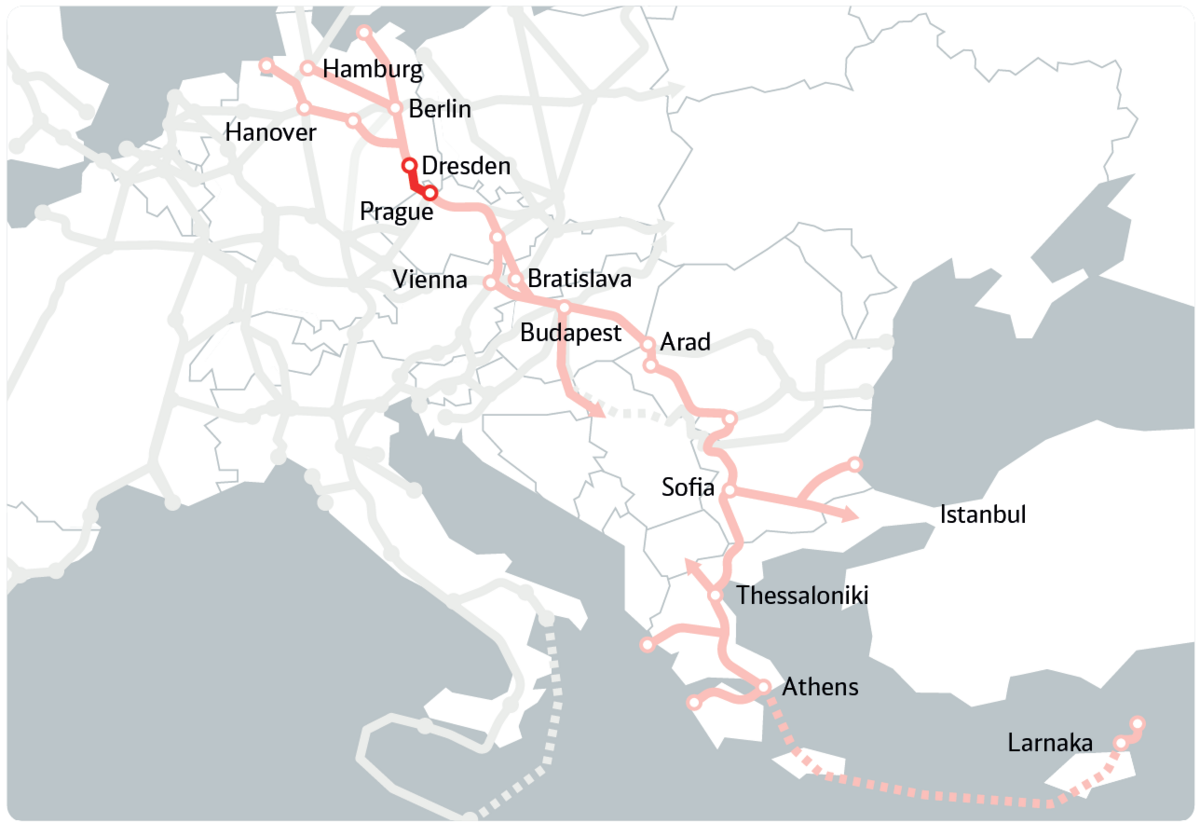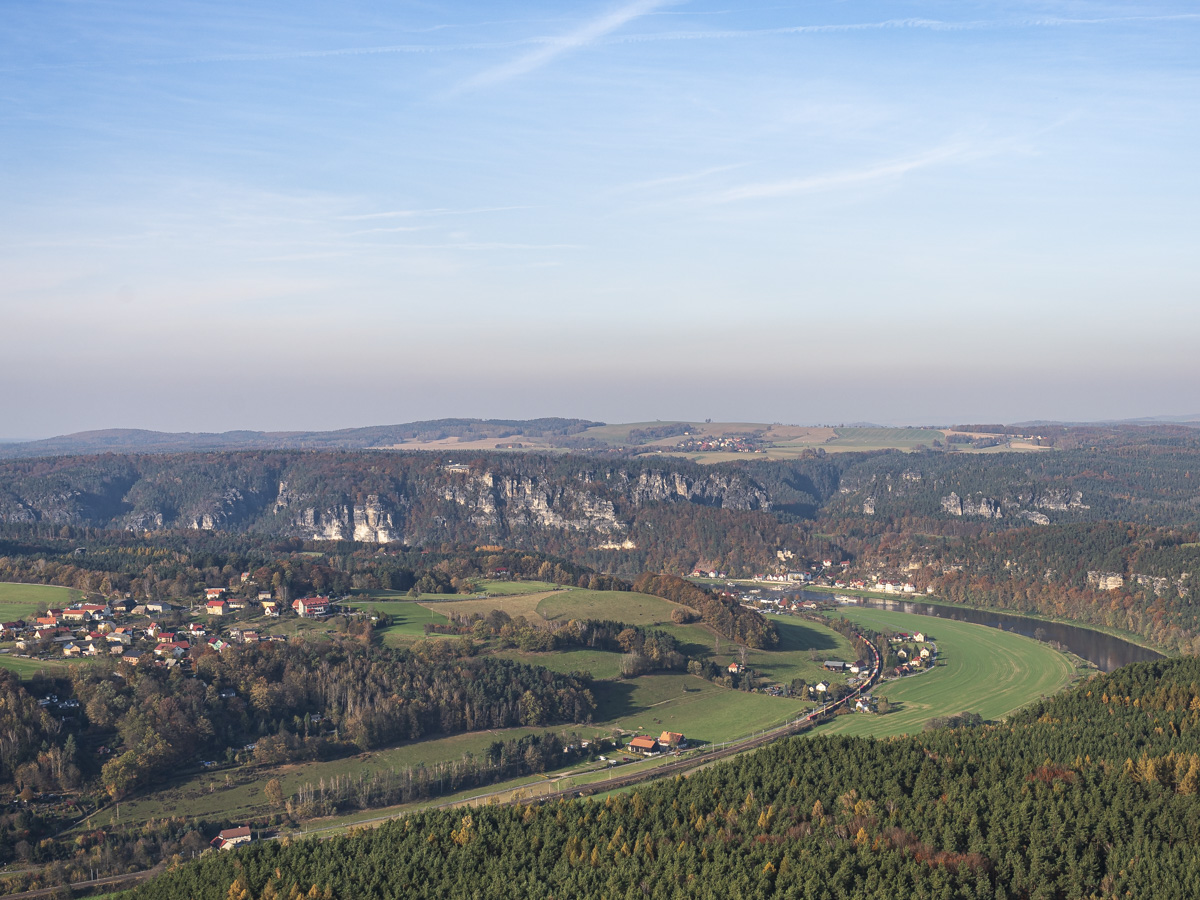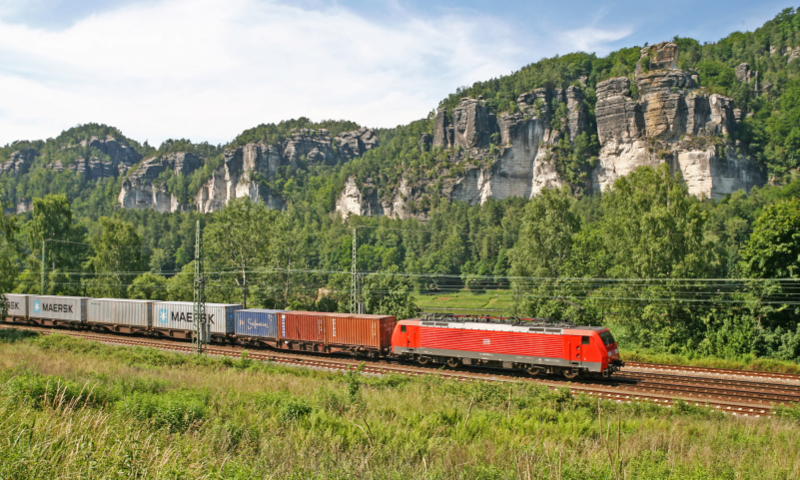Twice as fast from Dresden to Prague
The travel time from Dresden to Prague will be reduced by more than half compared to what it is today. This saves you 1.5 hours of your daily commute. Traveling on the state-of-the-art electrified high-speed line equipped with the ETCS train control system will be convenient, quiet, and comfortable.
Strengthen links with regional centres
Freight trains will operate on the mixed-track line, which will promote economic growth through short transport times.
Fast train connections to European capitals are an attractive prospect for both business and leisure travellers. The new line will free up capacity for more people to use the train, which will increase the access to interesting jobs and education.
Climate friendly on the move
Traffic volume in the EU is growing steadily. The Trans-European Transport Network (TEN-T) aims to improve connections in Europe through climate-friendly infrastructure to ensure mobility in the future. By shifting a portion of passengers and cargo to trains, it will help reduce emissions from cars and trucks, especially on the D8 highway in Czechia and A17 in Germany. High-speed lines are also a time-equivalent substitute for short-distance flight connections.
Accelerator for the regions
The new Dresden – Prague line will become part of Czechia’s RS4 (Rapid Transit Line) system and is one of five other prepared high-speed lines in the country which are part of the Trans-European high-speed network. Quick access to the regional centres of Northern Bohemia within 30 minutes will provide new investment and employment opportunities. On the German side, tourism in the Dresden, Heidenau, and Saxon Switzerland areas could also benefit from the shorter travel times. Additionally, tourists visiting the construction sites contribute to regional growth.
High-speed rail means regional development. New economic centres can emerge in the vicinity of the stations. The construction will be a great opportunity for Czech companies to offer their technical know-how.

Less stress for the Elbe valley
The new flood-proof line significantly relieves the burden on the Elbe valley railway line, which runs from Děčín via Bad Schandau and Pirna to Dresden. Good news for residents and tourists in the Elbe valley: with less freight traffic on the Elbe valley line, there will also be less noise pollution.
A strong Rail for Europe
The new Dresden – Prague line is part of the Orient/East Med corridor (total length: 9.000 km) and one of the nine core network corridors of the Trans-European Transport Network (TEN-T). It connects Central Europe with the maritime points of the North Sea, Baltic Sea, Black Sea, and Mediterranean Sea, and is of great importance for both passenger and freight transport. The European Commission and the German Federal Ministry of Transport and Digital Infrastructure signed the grant agreement for European funding of the project in 2020.


